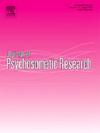Comparing depressive symptom representation between individuals with cancer, non-cancer controls and healthy individuals: A network approach
IF 3.3
2区 医学
Q2 PSYCHIATRY
引用次数: 0
Abstract
Introduction
Individuals affected by cancer are vulnerable to depression, but prevalence rates vary greatly between studies. The preponderance of somatic rather than psychological symptoms, overlapping with cancer-related symptoms, has spurred controversy on depressive symptom assessment in cancer. This work moves beyond sum scores of symptoms and explores symptom interrelations in individuals affected by cancer (compared to non-cancer and healthy controls) to deepen the understanding of depressive symptom expression in the context of cancer. It also compares the symptom network of individuals with cancer to a) non-cancer and b) healthy controls.
Methods
Network analyses and comparisons were conducted on 3512 participants from the Gutenberg-Health-Study (1230 with cancer; 1230 non-cancer controls; 1230 healthy individuals). Gaussian graphical models were estimated for each group, and network structures were compared regarding symptom predictability and centrality of PHQ-9 items.
Results
Depressive symptoms were more frequent in individuals affected by cancer than in non-cancer controls (d = 0.131) and healthy individuals (d = 0.172), but network structures did not differ. Mean predictability (amount of symptom variance explained through all other symptoms) ranged between 25 % and 29 %; with depressed mood highest in individuals with cancer and energy loss highest in non-cancer and healthy controls. Both symptoms were the most central nodes in all groups.
Conclusion
Symptom structure did not differ between individuals affected by cancer, non-cancer controls and healthy individuals. While somatic symptoms were more frequent in individuals with cancer, they were as closely associated with other symptoms as in the control populations. Along with psychological symptoms, somatic symptoms should be considered in screening as well as targeted by interventions in those with cancer.
比较癌症患者、非癌症对照者和健康个体的抑郁症状表征:网络方法
受癌症影响的个体易患抑郁症,但不同研究的患病率差异很大。躯体症状而非心理症状的优势,与癌症相关症状重叠,引发了对癌症抑郁症状评估的争议。这项工作超越了症状的总和分数,并探索了受癌症影响的个体(与非癌症和健康对照相比)的症状相互关系,以加深对癌症背景下抑郁症状表达的理解。它还将癌症患者的症状网络与a)非癌症和b)健康对照进行了比较。方法对来自Gutenberg-Health-Study的3512名参与者(1230名癌症患者,1230名非癌症对照,1230名健康个体)进行网络分析和比较。估计各组的高斯图形模型,并比较网络结构对PHQ-9项目的症状可预测性和中心性的影响。结果癌症患者的抑郁症状比非癌症对照组(d = 0.131)和健康组(d = 0.172)更频繁,但网络结构没有差异。平均可预测性(通过所有其他症状解释的症状方差量)在25%至29%之间;癌症患者的抑郁情绪最高,而非癌症患者和健康对照者的能量损失最高。两组症状均为最中心淋巴结。结论癌变患者、非癌变对照组和健康人的症状结构无明显差异。虽然躯体症状在癌症患者中更常见,但它们与其他症状的关系与对照人群一样密切。除了心理症状外,在筛查癌症患者时还应考虑躯体症状,并对癌症患者进行针对性干预。
本文章由计算机程序翻译,如有差异,请以英文原文为准。
求助全文
约1分钟内获得全文
求助全文
来源期刊
CiteScore
7.40
自引率
6.40%
发文量
314
审稿时长
6.2 weeks
期刊介绍:
The Journal of Psychosomatic Research is a multidisciplinary research journal covering all aspects of the relationships between psychology and medicine. The scope is broad and ranges from basic human biological and psychological research to evaluations of treatment and services. Papers will normally be concerned with illness or patients rather than studies of healthy populations. Studies concerning special populations, such as the elderly and children and adolescents, are welcome. In addition to peer-reviewed original papers, the journal publishes editorials, reviews, and other papers related to the journal''s aims.

 求助内容:
求助内容: 应助结果提醒方式:
应助结果提醒方式:


